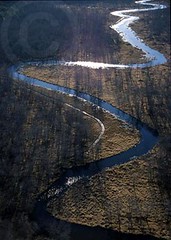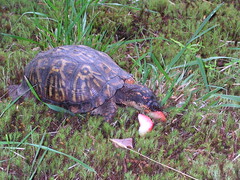Listing EPA as One of the 12 Worst Polluters in New York: Unfair and Dumb
The link on CEC’s site is now active and if you click on it you can read a brief rationale for the listing. To me, it seems as if the decision were made, and the explanation written, before last month’s compromise was announced. In the sentence that I quote below, note the word “proposed.” Of the 12 citations on the group’s website, that’s the only use of the past tense. My guess is that CEC had this list teed up when the dumping compromise was reached. But instead of taking the compromise into account, and eliminating EPA as one of the worst polluters, they simply put it in the past tense (and even if there had been no compromises, one wonders how a “proposal” can be a polluter), in effect calling EPA one of the state’s worst polluters for something it had merely proposed and then changed its mind about.
Here’s what CEC’s citation says:
Environmental Protection Agency Regions 1 and 2 (Long Island Sound) - proposed to dump 20 million cubic yards of contaminated dredge materials into Long Island Sound over the next 20 years, which would further devastate local fisheries and water ecology.
Environmental Protection Agency Regions 1 and 2 (Long Island Sound)
The Environmental Protection Agency (EPA) had a proposal to dump 20 million cubic yards of dredge materials into the Long Island Sound over the next 20 years. They considered designating two long-term dumpsites in the Sound to receive these untreated dredge materials. EPA analyzed four sites to be utilized as long-term dumpsites. Unfortunately, the I EPA and the Army Corps of Engineers (ACE) highly recommended two sites, the Western Long Island Sound alternative (WLIS) and the Central Long Island Sound alternative (CLIS). The WLIS is located only 2.7 miles from the shoreline and has already received 1.7 million cubic yards of dredged material. It was once a prime lobster producing area but has died off significantly within the last five years. The CLIS is between New Haven, CT, and Shoreham, NY, and has already received close to 14 million cubic yards of dredged material. Higher levels of toxic waste and problems with low dissolved oxygen (hypoxia) are found in and near these sites. Due to the profound impact of this pollution on New York State, EPA Region 2 should be transferred authority over this issue.
Even odder, it continues with a quote from CCE’s Adrienne Esposito, apparently sent in by Maureen Dolan, praising the compromise.
My skepticism about whether they know what they’re talking about increased when I read the sentence about the lobster die-off. The juxtaposition of that sentence with the one before it is clearly meant to imply that the die-off is related to the dumping. Yet no one I know of, least of all the scientists who presented at last fall’s symposium, have made that link. Nor has the Sound’s hypoxia been linked to the dumping in any meaningful way.
I made a living as a reporter by trying to point out, as often as I could, when government policies were bad for the environment. But listing EPA’s Sound cleanup as one of the 12 worst polluters in New York seems not just unfair but dumb.
(In my previous post, I said that CEC cited "EPA's Region 2 Long Island Sound Cleanup." I don’t see that phrase on CEC’s website; that particular phrase must have been written by the newspaper reporter.)





